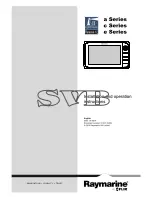
English
19
5.4.1 Connection to the water drain
The machine is equipped with a built-in drain trap
which must be mandatorily connected to the drain
system of the building.
The correct positioning and sizing of the drain trap are
shown on the installation drawing. The user must carry
out periodic maintenance of the drains and check that
they are not clogged.
Connect the grey drain pipe to the drain solenoid valve
located at the back of the machine (3 Fig. 8).
a
WARNING. The manufacturer is not liable in
case of environmental pollution due to an
incorrect use of the thermodisinfector.
5.5 Filters, spray arms and regeneration
salt
5.5.1 Filters
Insert the supplied filters in the specific positions.
Constantly check the cleanliness of the filters, especially
the tank bottom filter (3 Fig. 9).
Use this filter to have a high filtering, taking into
account that it will have to be cleaned after each cycle
performed to avoid an excessive build-up of dirt.
Insert the mesh filter (2 Fig. 9) and place it in the tank
seat. Finally, insert the central filter (1 Fig. 9) in the
mesh filter hole.
5.5.2 Spray arms
The two spray arms are supplied loose to avoid possible
breakage during transport. Place the two spray arms
(top and bottom) in their seats and tighten them to the
relative central pin inside the tank as shown in Fig. 10.
- After fixing the spray arms, carry out a test by
manually turning it, making sure that they rotate
freely and without impediments.
Ö
WARNING: For versions with spray arm
rotation control, the spray arm with the
magnet must be positioned below (1 Fig.
10b).
- After machine positioning, make sure nothing is
preventing the tank door from being freely opened.
- Make sure the machine is connected properly to the
electrical supply, to the water supply and to the drain
trap, then level it by adjusting its feet.
- After installation remove the PVC protection layer
covering the panels, make sure the liquid tanks are
full and the suction nozzles are properly inserted into
the right tanks. A label next to the cap indicates the
type of liquid to be used for each suction tube.
Ö
WARNING: Spray arm assembly direction,
the water outlet holes must face towards the
inside of the tank otherwise the spray arms
will NOT work.
5.5.3 Regeneration salt
The Thermodisinfector is supplied without regeneration
salt which will feed the device automatically during the
regeneration process.
The salt must be introduced through the tank outlet
inside the tank (4 Fig. 9). To introduce the salt, unscrew
the cap (anti-clockwise) and fill the tank with salt,
paying attention not to pour salt outside the bowl then
close the tank with the cap.
You must fill the salt tank every time the message “Refill
salt” is displayed.
- Use only appropriate coarse-grain salt.
- Do not use kitchen salt, crushed salt tabs or other
types different from those indicated, as it may contain
insoluble substances.
- Do not pour cleaning liquids or other solutions in the
salt tank.
a
Failure
to
comply
with
these
recommendations can lead to a malfunction
of the water softening device. Just before
the salt runs out completely, the display will
show the message «Lack of salt». At this
point, the salt should be topped-up as soon
as possible, otherwise an error message will
appear and it will no longer be possible to
activate a new cycle if not by resetting.
5.5.4 Salt refill
Proceed as follows to refill the salt:
1) Delete the message on the display by pressing the
RESET key for 5 seconds.
2) Open the door and remove any already inserted
load.
3) Loosen the salt tank cap and insert the funnel.
4) In the first filling, introduce ½ litre of water to
dissolve the residue salt. FIRST FILLING ONLY
5) Fill with salt up to the edge. The tank contains about
0,7 kg of salt.
6) Thoroughly clean the edge of the tank.
7) Tighten the cap again.
8) Start the «Rinse» cycle.
- It is absolutely necessary to remove any salt residues
that may have settled in the tank after refill and
before rinsing.
















































